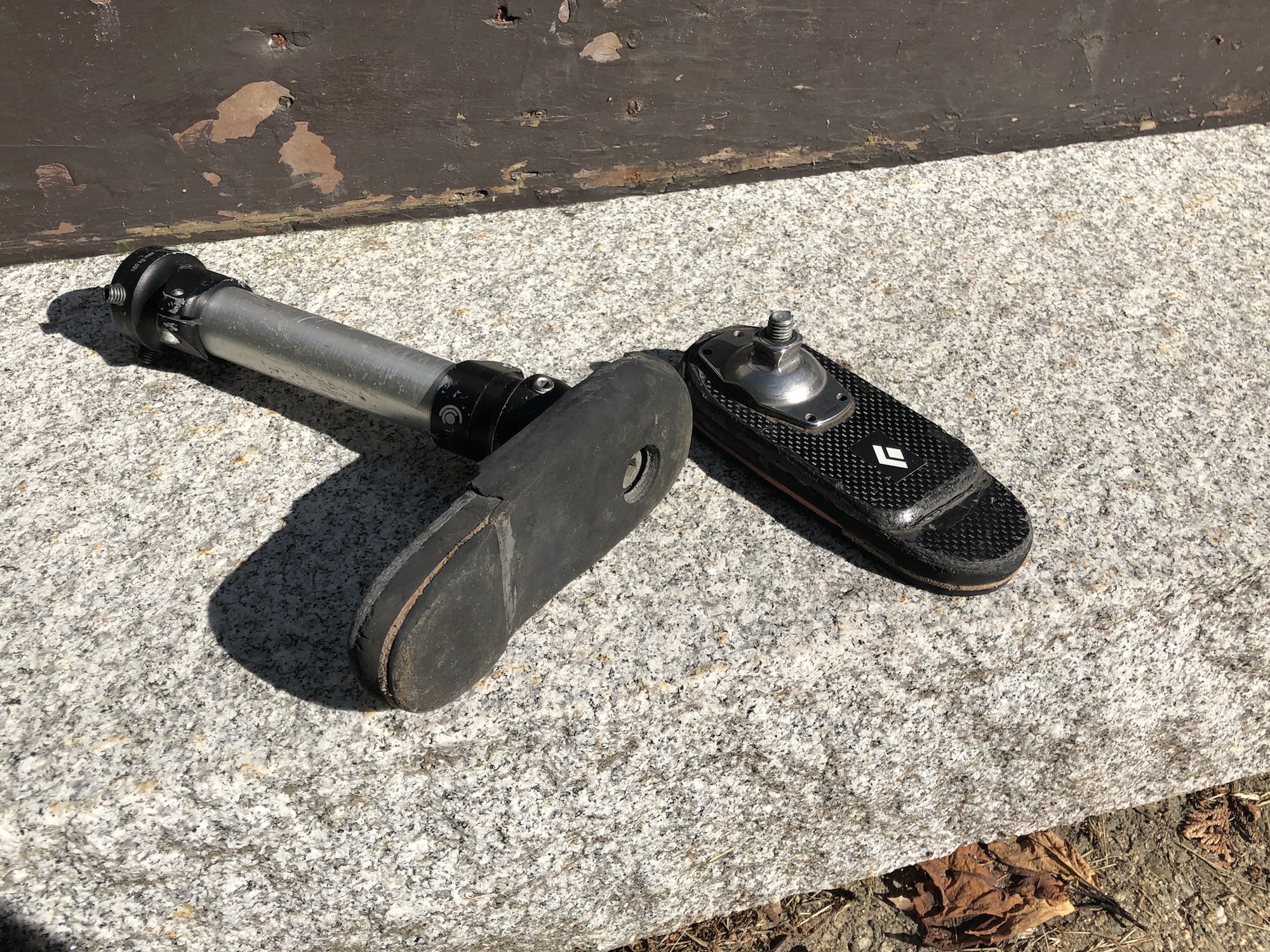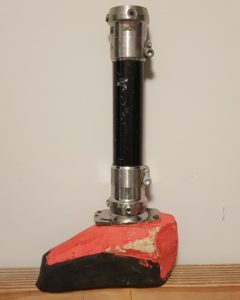Climbing Feet Reviewed
A guide to climbing feet for amputee climbers.
By Jono Lewis
Adaptive Climbing PDX
Ask any amputee climber what they want from a climbing foot and you’ll get a different answer. What you want depends a lot on personal preference, as well as the type of climbing you will be doing. A foot made for slab probably won’t be as useful in a crack; a small foot for micro-edges probably won’t be great to walk around in at the base of the cliff. When I started my climbing journey, I had no idea that prosthetic climbing feet even existed, and as you’ll see there is still a lot of development potential in this space. Below I’ll give an overview of your main options for climbing feet.
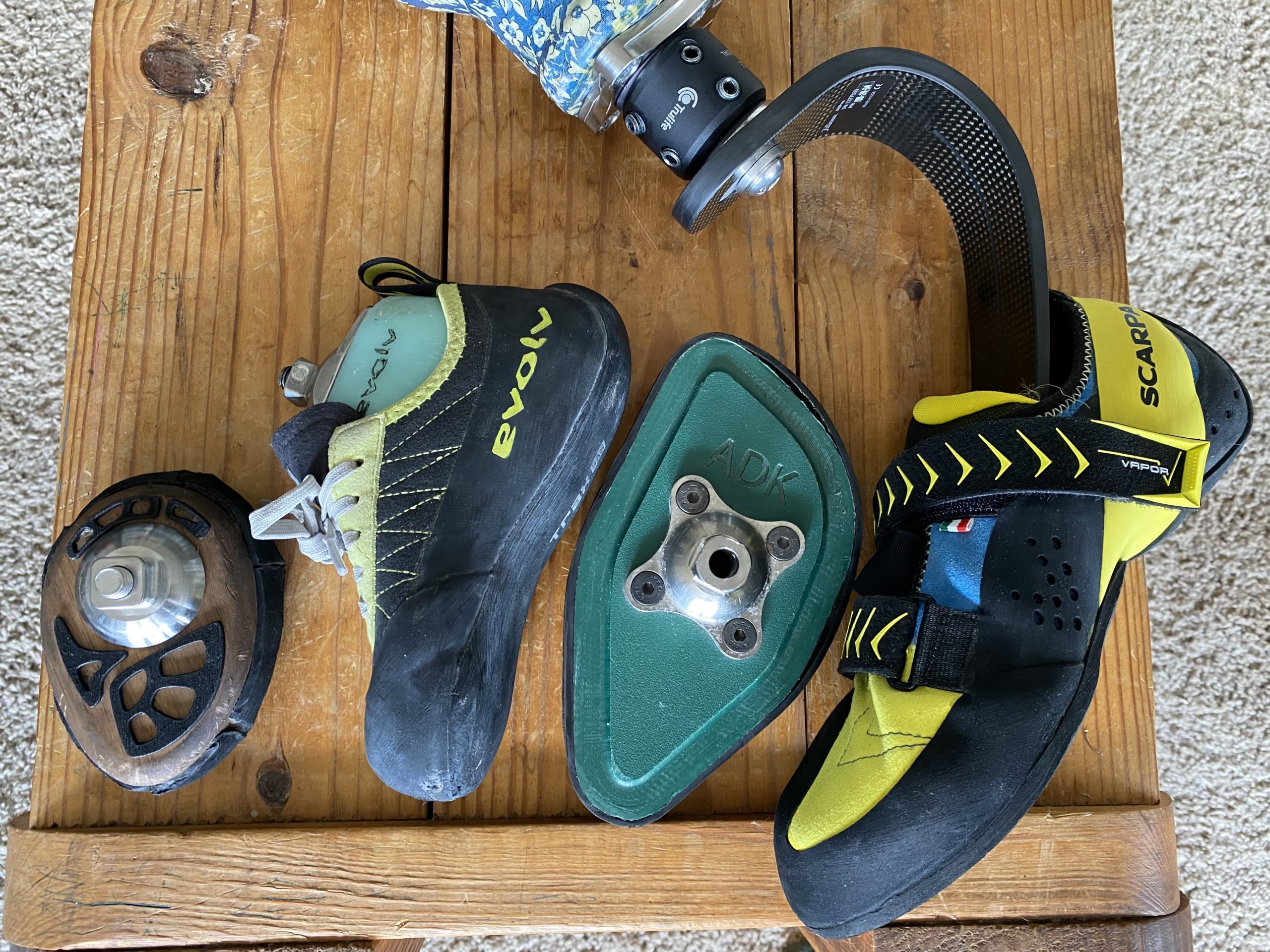
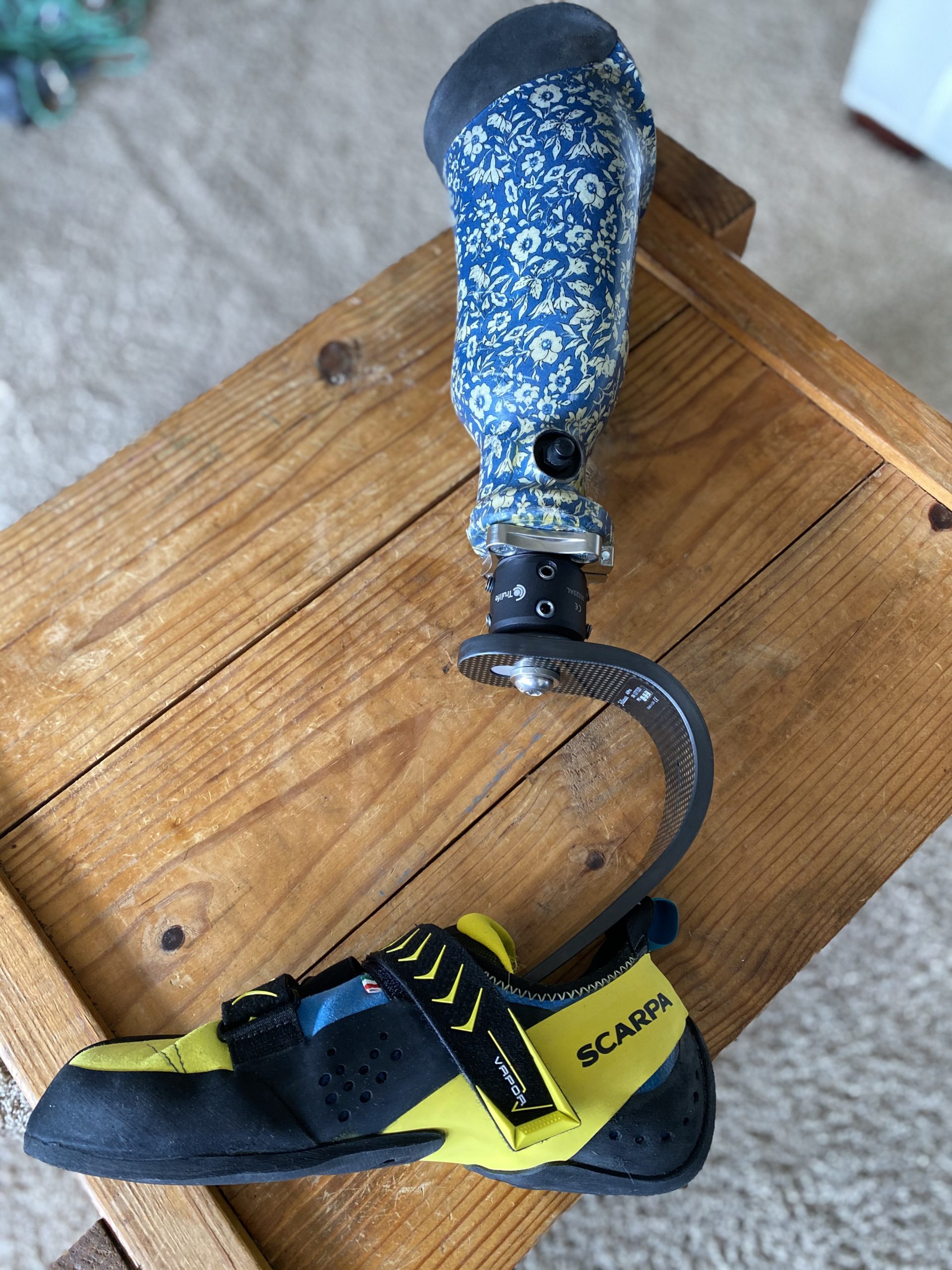 Option 1: Everyday walking foot.
Option 1: Everyday walking foot.
A very easy answer, and perhaps a good answer for the very occasional climber would be to just throw a climbing shoe on a regular walking foot. This is in fact how I started climbing. It does work, but you’ll notice as foot holds become smaller the flexibility of the toe will generally cause the shoe to slip right off the hold. The issue here is that the flexibility of a walking foot changes the angle that the rubber connects to the rock as you weight it. Once that angle changes (becoming steeper) the foot is likely to slip off the hold. I also find the proprioception to be more difficult due to the full length of the foot.
In saying that, I have a friend who climbs way harder than me in an old flex-foot. He has ground down the toes of the foot shell to reduce the flexibility, and he swears by it.
Price: $0
Weight: varied
Pros:
- low-cost (no cost other than a shoe)
- no foot-swapping
- comfortable to walk in
Cons:
- extremely poor edging without modifications
- long, wide, bulky
- slips off almost everything that isn’t a jug
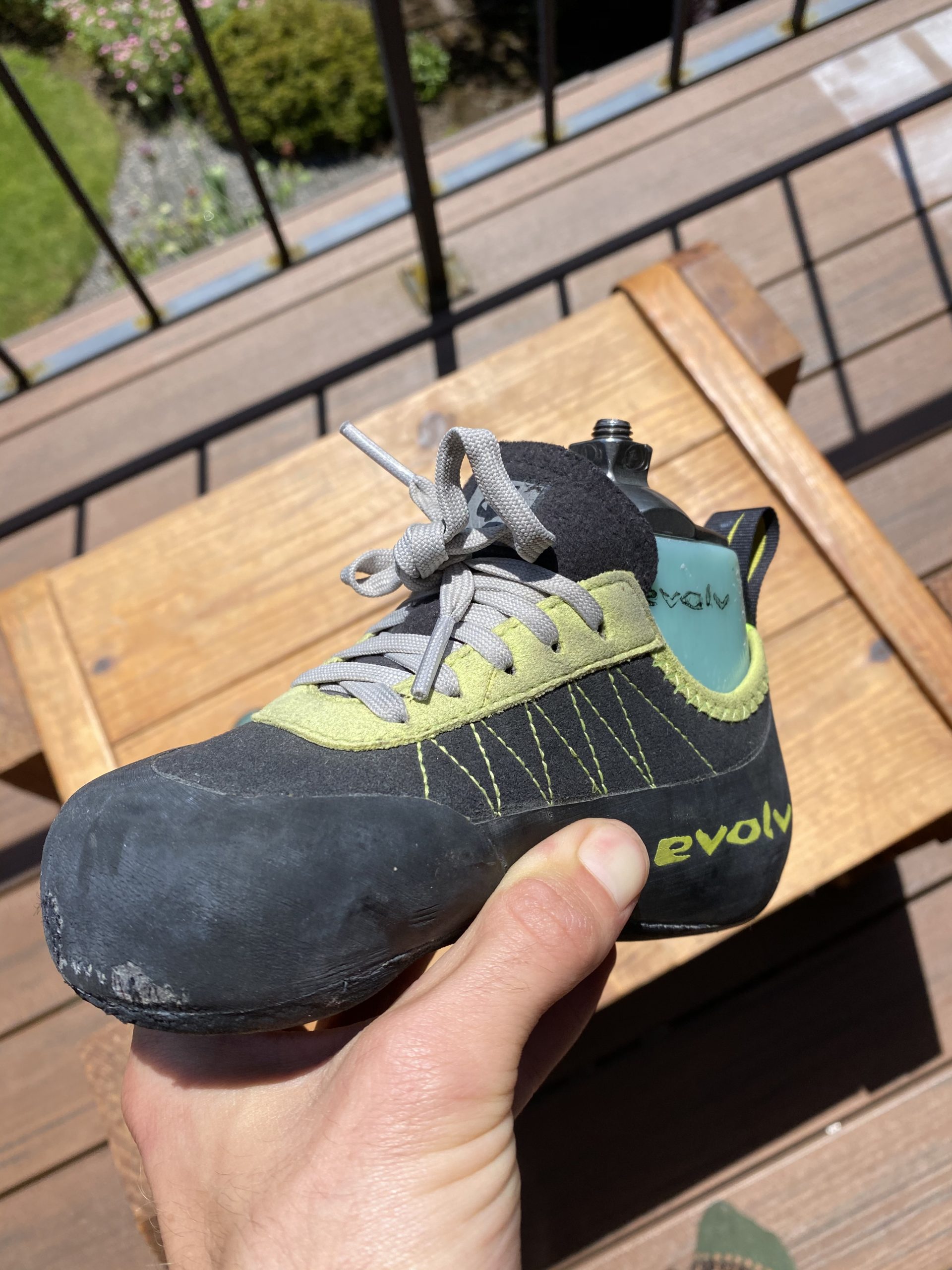 Option 2: Evolv Adaptive Foot (EAF)
Option 2: Evolv Adaptive Foot (EAF)
Evolv really changed the game for amputee climbers with this affordable and high-performance foot. This foot is based on the original design by TRS prosthetics, but brought to the public at an approachable price point. The foot is about the size of a 5 year-old’s foot, and sits inside a specially made Eldo-Z shoe by Evolv. Being short and completely rigid, it is a giant step up from a walking foot. The EAF is a great all-rounder, and has the benefit of being able to swap out shoes, making resoling a breeze. I believe if you email Evolv they will also sell you a shoe for your sound side at half price, though this is no longer listed on their website.
This was my first climbing specific foot, and I would recommend it to most amputees, with a few caveats. A couple of issues are its hefty weight, inability to edge anywhere other than the toe, slippage of the shoe when on small edges (can be fixed by glueing the shoe in place), and its uniform size, which can be limiting for crack climbing. If you resole this shoe with a double rand you will get much longer life between resoles.
Price: $250
Weight: 700g (foot + pyramid + shoe)
Pros:
- easy to resole
- walks fairly well given it is completely rigid
- climbs generally well
Cons:
- heavy
- edging on toe only
- limited utility in cracks
- limited smearing ability
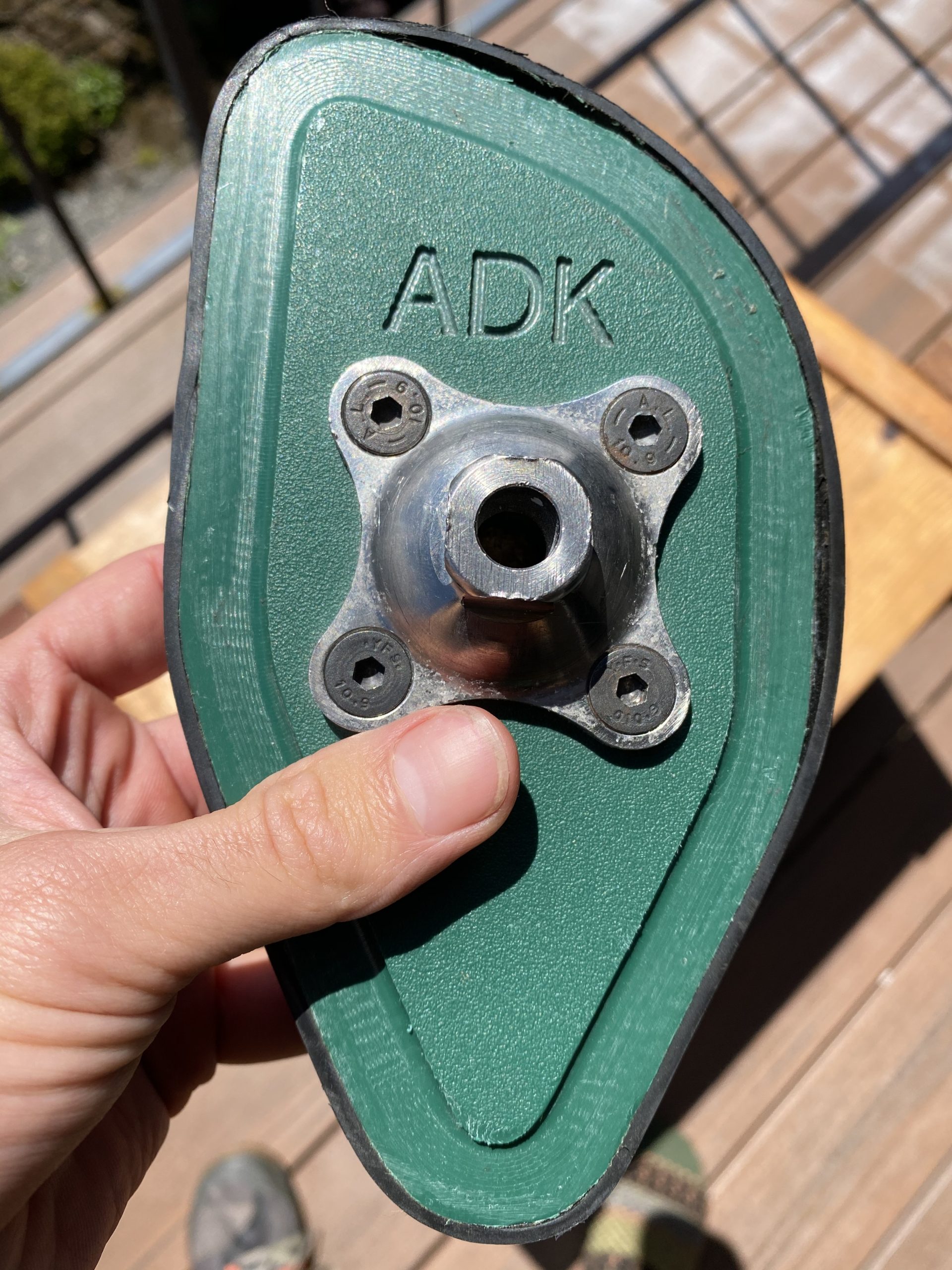 Option 3: ADK by Mountain O&P
Option 3: ADK by Mountain O&P
This is another great affordable option. As far as I’m aware, the ADK is the only off-the-shelf climbing foot besides the above. Cost-wise, this foot compares to the EAF, though in my opinion performs better but with the trade off of decreased durability. At first glance you’ll notice the ADK is asymmetrical, with what looks to be a big-toe design. What is not obvious is that the “toe” is actually on the outside edge. The beauty of this design is that you’re able to climb with a flat inside edge, with your hip closer to the wall, and also have solid edging capability on the outside. Flip the foot around 180degrees and you have a tapered crack-climbing foot!
Most issues observed with this foot are durability related. After just 3 pitches of climbing the rubber had already become separated at the sides of the foot. After 30 pitches (of indoor climbing) there was significant separation of the sole. I personally find that the pyramid being centered in the foot reduces the power of heel hooks (which is already severely limited for amputees), and makes walking less comfortable. The slippery plastic top makes toe hooking impossible.
Price: ~$200+
Weight: 350g including pyramid
Pros:
- light weight
- ability to edge on all sides
- crack climbing
Cons:
- durability
- walking comfort
- cannot toe hook
Option 4: DIY
Off-the-shelf feet are a relatively new offering. Traditionally, amputees have made their own feet using wood and rubber. Hugh Herr famously purpose-built feet to claim the 2nd ascent of City Hall (5.13c) at Index, as he needed a specific width for the crack. Even today, I have friends who make feet out of various materials based on their own climbing needs.
Price: ???
Weight: ???
Pros:
- exactly what you want
Cons:
- you have to do it yourself!
- Jim Ewing’s Carbon Foot
- “THE PITON”
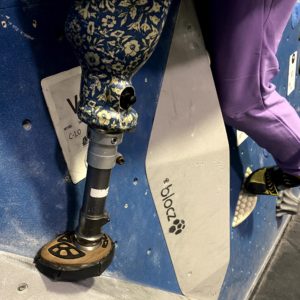 In Summary
In Summary
From this rundown you can see there is a lot of personal preference, and certain limitations when it comes to choosing climbing feet. I am excited about the future of climbing prosthetics. Projects such as “Out on a Limb” (https://arcteryx.com/ca/en/explore/problem-solvers/kai-lin/) by Arc’teryx bring attention to and fuel design in this space. For the past year I have been involved in prototyping and testing a new climbing foot in Portland OR. AVO (@avoclimbing) is ultimately hoping to offer the AVO climbing foot as a product to our community. The bottom line is that there are multiple options out there, and there are no wrong answers. If you’re out there having fun and climbing on rocks, you’re doing it right!
Got a question? Contact Jono via Instagram or email lewis.jono@gmail.com!

